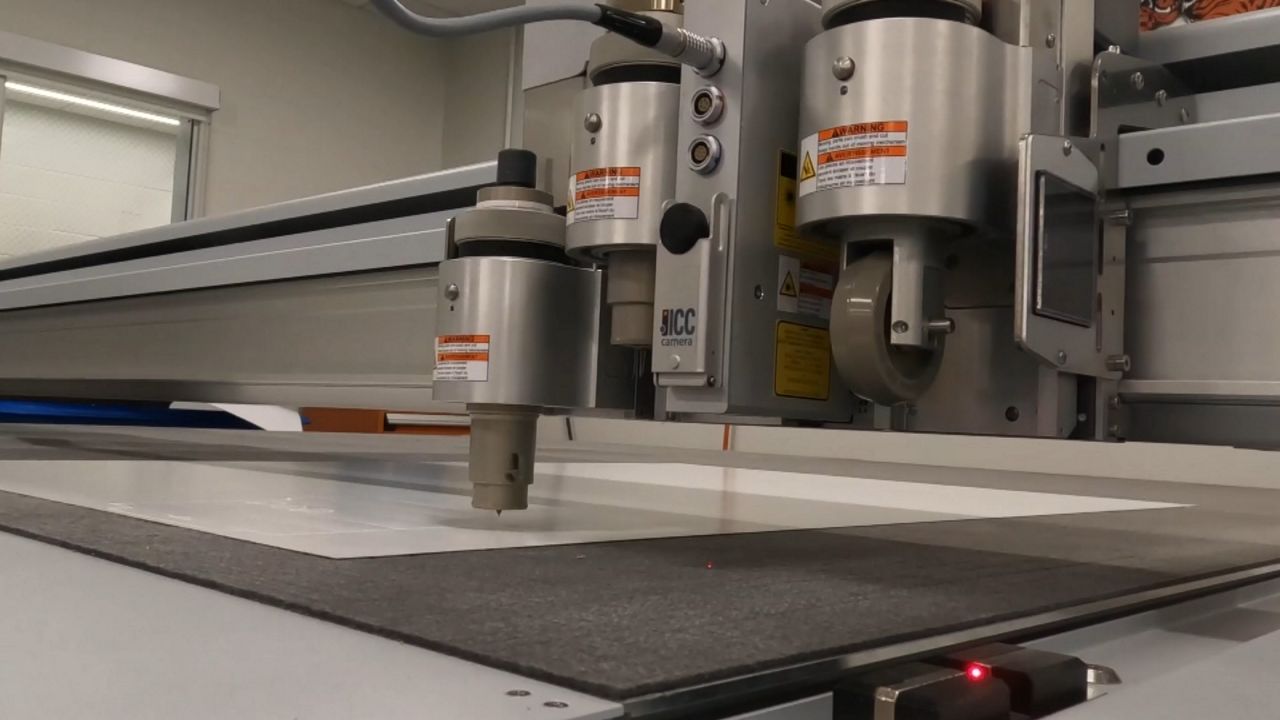ROCHESTER, N.Y. — A lot of little details go into getting a product to hit the shelves. Packaging science students look into what makes a product manufacturable, and for some Rochester Institute of Technology students, sustainable.
“Packaging is one of the obviously most wastes that gets put into the environment," said Malena Juif, a junior packaging science student at the Rochester Institute of Technology.
Last semester, she joined a team of graphic designers, to create a sustainable way to package a vegetable. Her group of five chose garlic.
“First I did like this coffin design because I was thinking garlic. Oh, vampires making a coffin. But then like that didn't work. And then we moved to like, this basket kind of one, but that didn't protect the garlic enough. And then eventually I landed on this hexagon design,” Juif showed. “They liked the interlocking designs, but then also how it comes together in the middle and that's how it closes. It closes right in the middle. And then it is able to be like this interactive opening experience, while also like you can kind of display it on your shelf at home. That was our whole idea. We wanted you to want to have it right on your counter and just be like, 'Wow, this is pretty. I want to keep it right there.'”
Her team called the design "Grovey Garlic." The graphics were inspired by grandmother’s colorful quilting design, and Juif created a clay-coated, 22-point paperboard structure without glue to make it more sustainable.
“Being garlic and being lightweight, it was important for me to create something that didn't have glue because it didn't really need it," Juif said. "And that was something that the recyclability aspect kind of didn't go with."
Despite the glue-less design lowering the project's manufacturability aspect, judges at the no glue lessened the annual National Paperboard Packaging Alliance Student Design Challenge agreed the sacrifice was worth it.

“When I got the email, I was like, 'Wow, we placed in the top three.' It was insane,” Juif laughed.
She and her team placed third across the nation, competing against about 25 other designs.
“Part of the reason our team did so well is that they had the innovation, innovative shape, and then they had the little windows, which is exciting and helped the garlic stay fresh. And the graphics were just stunning. So I think it was just a very cohesive solution,” Lorrie Frear, a professor of graphic design at RIT who advised the students projects, explained. “Every major thinks a little bit differently, and they approach problem solving a little differently.”
Frear was joined by Carlos Diaz’ RIT packaging science students to collaborate on this project. The class happens every year.
“That has been a driver and an umbrella of a lot of, research and competitions like that sustainability part," Diaz said. "So that plays a strong role. And nowadays there is a big trend towards like paper-based and one of the things for this competition was to pick a product that is traditionally packaged in plastic and create an alternative that is paperboard-based. I think this group particularly put out a lot more work, a lot more iterations in their prototype and their design, and that shows at the end. I mean, you might see something that is very similar to something else, but that attention to detail, I think, is what, takes them to the next level.”
The collaboration between classes, departments and students is something both professors and Juif say is an invaluable skill to build for students entering the workforce.
“One of the major benefits of a class like this is that interdisciplinary collaboration, because that's how the students will be working in the field,” Frear said. “Teamwork. Trying to work with other people, trying to deal with people's different, work styles, skill levels is really, really critical to their preparation when they go out into the real world.”
The rest of Juif’s classmates on this project have already graduated. As a third-year, she’s looking forward to pushing the boundaries for sustainable packaging at next year’s competition. She says throughout this year’s experience, she was able to network with other students and like-minded professionals and hopes to be able to market her project next year for whole sale production.
“Plastic is just so cheap and efficient and it's a good option to protect stuff, but it's not a good option for the environment,” Juif said. “I do hope next year we can try and like maybe partner with an actual company because that would be cool next year.”



